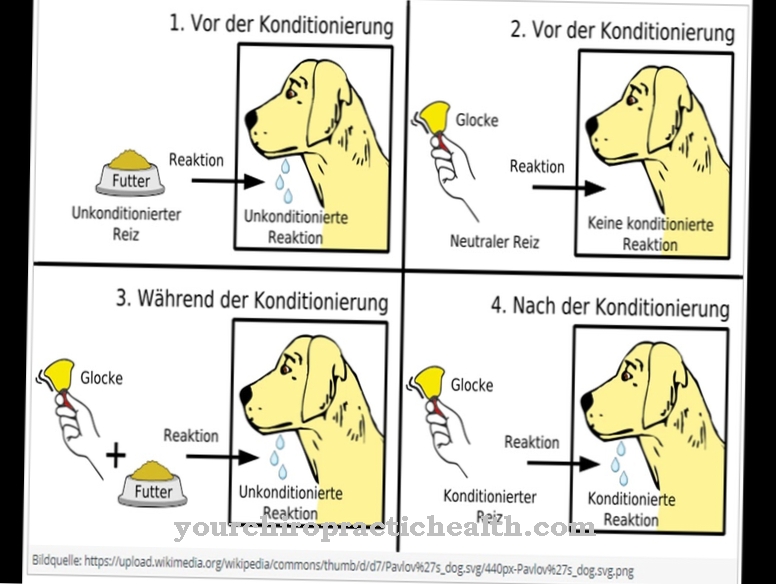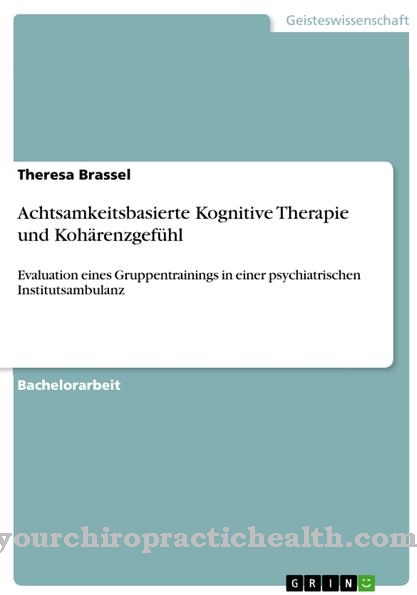The Electroglottography is a non-invasive procedure for the diagnosis of the larynx and vocal folds, which is used in particular to monitor the success of treatment in larynx and vocal fold therapy.
The two electrodes attached to the surface of the thyroid cartilage determine the changed electrical impendances in vibrating vocal folds and graphically represent the use of the voice in a so-called electroglottogram. When evaluating this electroglottogram, the recorded Lx waveform of the vocal cord vibration is checked for abnormalities such as incomplete vibrations , which enables the doctor to classify dysphonia and voice disorders more closely.
What is electroglottography?

The ENT doctor uses electroglottography to diagnose the larynx and vocal cords. For this purpose, after an examination, the patient is given two electrodes attached to the wing of the thyroid cartilage and the use of the voice can be graphically displayed.
The electroglottography shows the vibration cycle of the vocal folds and the larynx during normal and disturbed speaking and singing by means of a laryngograph. The method is a non-invasive measurement method that works mainly with two electrodes attached to the surface. It can therefore also be referred to as EGG and in particular registers changed electrical impedances of the vibrating vocal folds.
The records from the laryngograph are called electroglottograms and provide information about the quality and quantity of vocal fold vibration. This ultimately illustrates the linguistic use of the voice. Originally, electroglottography was designed for hearing impairments. The procedure has meanwhile also become clinically instrumental for visual feedback therapy. Fabre had already described the basics of the measurement process in 1957. After this first idea, the electroglottography was modified and refined until it corresponded to the current picture.
Function, effect & goals
Electroglottography is mainly used to control larynx and vocal cord treatments or voice therapies. In particular, the therapeutic success of organic voice disorders can be evaluated almost ideally with the method. Sometimes electroglottography is also used in the diagnosis of the larynx and vocal folds. For example, dysphonia diagnostics can be carried out using the EEG procedure.
In preparation for the measurement, two electrodes are placed in a symmetrical arrangement on the wings of the thyroid cartilage. Finally, when speaking, singing, or singing out loud, the laryngograph takes a measurement of the AC resistance between these two electrodes. The device records its measurements in the form of an Lx waveform, where Lx stands for the recorded laryngogram. The waveform moves in a positive range as the vocal folds become more closed. Each tip of the wave marks maximum contact between the two vocal folds.
The wave main edge provides information about the beginning of each closing phase. In contrast, the electroglottogram does not provide any definitive information about the opening width of the glottis. Horizontal opening and closing movements of the vocal folds of the larynx to and from the midline, on the other hand, can be easily observed and are therefore the main component in the waveform of the laryngograph.
However, the vertical components of the vibration cycle can hardly be described. The recorded waveform is medically evaluated after the measurement. Abnormal waveforms occur when there are physical abnormalities, leading the doctor to suspect a medical voice disorder.
Such a disturbance can manifest itself, for example, in consistently irregular or also partially incomplete vibrations. Even shorter sections of such disturbed vibrations can be an indication of voice disorders. Irregular vibrations as an indication of vocal disturbances in main pitch changes and in the articulation of velar consonants can be most clearly understood. In the electroglottogram, abnormal phenomena can express themselves not only in dissymmetrical vocal fold vibrations but also in air flow aerodynamic disturbances.
Risks, side effects & dangers
Since electroglottography is a non-invasive procedure, its use is not associated with any side effects or risks for the patient. An inpatient stay is not required for the implementation. In addition to electroglottography, there are procedures for larynx and vocal fold diagnostics. The attending physician therefore decides on a case-by-case basis whether electroglottography or an alternative procedure is indicated.
One of the best-known alternative procedures is the classic indirect laryngoscopy. During this visual procedure, the doctor inserts a mirror or magnifying endoscope into the throat. If the gag reflex is strong, local anesthesia of the pharynx wall may be indicated. Compared with this procedure, electroglottography is much more comfortable and easier for the patient, but also for the doctor. In the alternative method of direct laryngoscopy, the doctor again inserts a support laryngoscope and an endoscope, which are usually also connected to a microscope.
This is how the lining of the larynx can be viewed. Changes and deposits can also be made visible in this way. When diagnosing paralysis as well as carcinoma or other changes of this kind, this procedure may make more sense than pure electroglottography. A third alternative method is the so-called laryngostroboscopy, in which short flashes of light are generated and synchronized with the vibrations of the vocal folds using a larynx microphone. The doctor then changes the frequency of the flashes and, under certain circumstances, visualizes a slowed oscillation sequence.
As with electroglottography, this procedure does not make the vertical component of the vibrations visible, but rather focuses on the surface of the vocal folds. Electroglottography has something ahead of all of the methods mentioned, because the non-invasive method neither requires complex evaluations of acoustic signals during speaking, nor does it force the doctor to intervene in the process of speaking itself. For these reasons, electroglottography is particularly popular in larynx and vocal fold diagnostics, despite the potential alternative methods. In the case of tumorous changes, the procedure may be combined with direct laryngoscopy.
You can find your medication here
➔ Medicines for hoarsenessTypical & common larynx diseases
- Laryngitis
- Throat cancer
- Larynx paralysis
- Epiglottitis (inflammation of the epiglottis)
Books on throat cancer













.jpg)

.jpg)
.jpg)











.jpg)